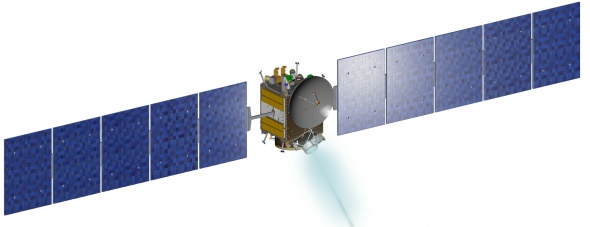The Dawn Mission was sent out to explore the origins of our Solar System by probing the two largest asteroids, Ceres and Vesta. It will bring us closer to understanding the creation and evolution of the inner solar system by the accretion of smaller rocky bodies into large ones. Current models show that the members of the asteroid belt are the remnants of a planet whose formation was arrested by the gravitational influence of Jupiter. The asteroid belt has evolved through collisions, and Ceres and Vesta are the largest remaining remnants, thus holding the evidence for the past and the present.
The spacecraft was designed for two long-term rendezvous periods and travel in between. It uses ion thrusters, a method of propulsion that allows the craft to change speeds when orbiting an asteroid or moving from one to the other. The xenon fuel is ionized, or stripped of electrons, to produce charged particles. The particles are accelerated through an electric field, propelling the spacecraft forward.
Dawn is a suite of instruments to explore Vesta and Ceres with visible, infrared, and gamma-ray light, neutron spectroscopy, and probes of the gravity fields. The Asteroid Mappers project focuses on the visible light images of the surface of Vesta.
Dawn was launched on September 27, 2007, and went into orbit around asteroid Vesta on July 16, 2011. For over a year, it collected images and data on the strange surface of the asteroid. With so much data, it will take years to process the information, and we need the help of citizen scientists to map the entire surface. This is where you come in!
Dawn left Vesta on September 5, 2012, and is scheduled to arrive at dwarf planet Ceres in March 2015.
For more information, see the NASA Dawn Mission page.

